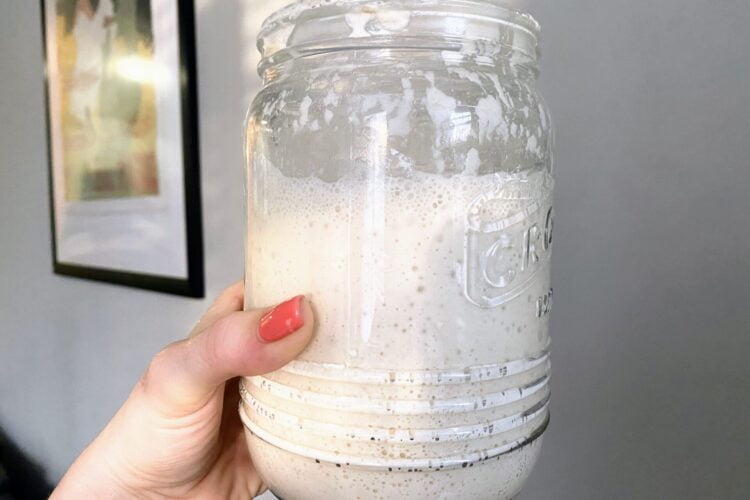Why do we want to know if starter is active or not? Knowing the level of activity of your starter will help you estimate your bulk fermentation time. And knowing your bulk fermentation window, it will help you plan accordingly. You no longer need to sit and watch your bulk ferment anymore! No more overprofing! 🙂 AND, knowing bulk fermentation time will help you streamline your baking process or even scale up if you are thinking of opening your mico bakery.
Now, let’s dig in into what is considered an active sourdough starter and how we can estimate bulk fermentation time from it.
What is an active sourdough starter?
An active starter is one that has a high level of yeast and bacterial activity, which can be observed through several key characteristics.
- Doubling Time: An active starter should double (or even triple) in volume within 4-6 hours after feeding at room temperature (around 21-24°C or 70-75°F).
- Bubbly and Aerated: The starter should be full of bubbles throughout, indicating strong fermentation activity.
- Pleasant Aroma: It should have a pleasant, slightly tangy, and yeasty smell without any off odors.
- Consistency: The texture should be light and fluffy when at its peak activity.
Categories of active starter:
We will need K value to calculate bulk fermentation time.
Very Active Starter:
- Doubling Time: 4 hours or less
- K Value: 120-140
Moderately Active Starter:
- Doubling Time: 4-6 hours
- K Value: 150-160
Less Active Starter:
- Doubling Time: 6-8 hours or more
- K Value: 170-180
Practical Steps to Assess Your Starter
- Feed Your Starter: Mix equal parts of starter, water, and flour (by weight) and observe the rise.
- Track the Time: Note how long it takes for the starter to double in size.
- Observe the Bubbles: Check the starter for plenty of bubbles throughout the mixture.
- Smell and Texture: Ensure the starter smells pleasantly tangy and feels light and airy.
By evaluating these characteristics, you can determine the activity level of your starter and choose an appropriate ( K ) value for your bulk fermentation time calculation. Adjusting the ( K ) value based on the specific behavior of your starter will help you achieve more consistent results.





